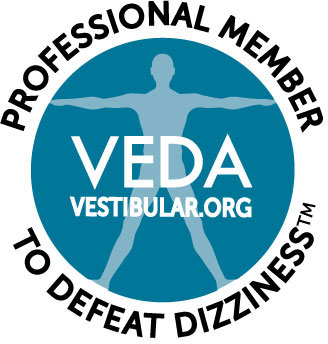Dizziness—a catch-all term used to describe a variety of disorienting and uncomfortable sensations—can be a scary and confusing feeling for many people. But before rushing to the Internet to self-diagnose the root cause of your dizziness (and likely scare yourself even more), it’s worth learning about the different types of dizziness. This will help you to better understand what you’re feeling so you can seek the right kind of treatment.

At Neuro Visual Center of New York, we specialize in diagnosing and treating vertical heterophoria, an eye misalignment disorder that can cause several different types of dizziness. We offer effective treatment for dizziness that pinpoints the root cause of your condition rather than merely addressing the symptom. Here, we explain the four types of dizziness.
1. Vertigo
This is a feeling that the world around you is spinning. It is often accompanied by nausea and trouble with balance, and can last as little as a few minutes or as long as a few days. Inner ear problems are the leading cause of vertigo, although it can also be a symptom of other medical conditions. Because vertigo is associated with so many different medical disorders, many patients struggle to find an accurate diagnosis and treatment for vertigo that provides lasting relief.
2. Disequilibrium
Disequilibrium is the feeling that you’re about to fall. Patients experiencing this symptom often feel the need to grip onto something to steady themselves. If you’ve ever experienced the sensation that you’re rocking on a boat while you’re actually standing on land, this is an example of disequilibrium. The feeling can be caused by problems with the inner ear, central nervous system or vertical alignment of the eyes, among other medical conditions. This is a common symptom of Vertical Heterophoria.
3. Lightheadedness
Lightheadedness is the sensation that you’re about to faint. Your head feels extremely light, and you may also experience nausea. The feeling can last for just a few minutes or for several hours. It can be caused by many different conditions, including hunger, anxiety, heart disease, low blood pressure, ear infection, and even binocular vision dysfunction.
4. Anxiety
Anxiety and dizziness are highly interrelated feelings. Many people with anxiety also experience dizziness, and vice versa. Patients with vertical heterophoria frequently experience a dizzy, anxious feeling in large, crowded spaces. If you feel out of balance and don’t feel safe in the environment, a panic attack can happen. The anxiety can fuel the dizziness.
The Connection Between Dizziness and Vertical Heterophoria
Vertical heterophoria is a condition that results from tiny misalignments in your eyes that cause each eye to see the same object at slightly different levels. To correct this vision error, your brain forces the muscles in your eyes to work extra hard so your eyes are able to send one clear image to your brain, rather than two uneven ones. Eventually, all this work puts a huge strain on these muscles, which leads to a wide range of symptoms including headaches, dizziness, nausea, anxiety, difficulty reading and more.
At Neuro Visual Center of New York, we specialize in diagnosing and treating vertical heterophoria and related symptoms. We are dedicated to finding the cause of our patient’s dizziness. Call us today at (516) 224-4888 to schedule an appointment.






Thanks for helping me learn more about dizziness. I had no idea that the lightheadedness could potentially last several hours or be caused by an ear infection. I’m interested to learn if the severity of the dizziness is related to the condition or if it just depends on the individual.
Every patient is different. Patients with the same conditions can have different degrees of severity.